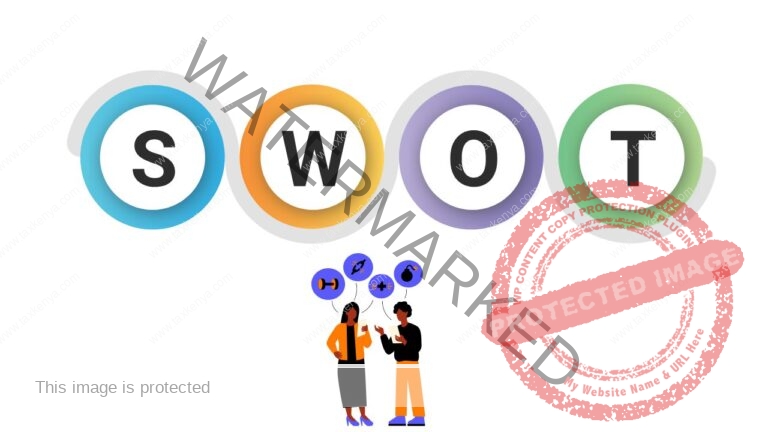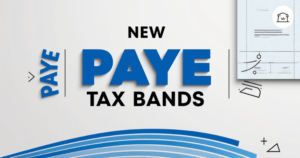Many taxpayers have recently received VAT Auto Assessments (VAA) notifications and wonder what they are. This post will explain VAA. Many transactions in Kenya are subject to VAT along the supply chain.
However, the application of VAT provisions in a transaction depends on:
- Place:- where the transaction takes place. VAT is only applicable in transactions in Kenya and into Kenya.
- Time:- VAT is reported for a transaction that happens in one tax period, which is one calendar
In every transaction in the supply chain where VAT is applicable, there are two participants:
- Seller taxpayer – this is a seller who is registered for VAT.
- Buyer – the buyer may be registered for VAT or not. This article will refer to a buyer registered for VAT as a buyer taxpayer.
Seller taxpayer
Every time a seller taxpayer transacts and charges VAT, the VAT is declared for that tax period which is the calendar month during which the transaction takes place. The seller taxpayer will be charged VAT at either the standard rate of 16%, a special rate of 8% or a zero rate (0%).
However, the seller taxpayer is allowed up to the 20th day of the following month to declare and remit to KRA any balance of output VAT after deducting any deductible input VAT incurred during the last six months, any VAT credits carried forward and any Withholding VAT.
Therefore, output VAT should be declared in the VAT 3 monthly returns and paid within 20 days after the end of the calendar month when the VAT transactions occurred. Failure to do this attracts a non-filing fine, late payment penalties and interest.
Buyer taxpayer
VAT is applied along the supply chain. Hence, the output VAT declared by the seller taxpayer is the buyer’s input VAT if they are registered for VAT. However, the VAT Act (2013) allows the buyer taxpayer to claim the input VAT within a period of six months since incurring the input VAT.
Current scenario
Recently, the tax authority KRA has discovered that several taxpayers claim input VAT not declared by the seller taxpayers as output VAT. Many buyer taxpayers we heavily penalized in addition to paying the principal taxes in VAT and income tax.
Therefore, there is a need for KRA to take corrective measures and save the buyer taxpayer from the punitive penalties.
What is the effect?
Failure to declare output VAT by some seller taxpayers affects the following:
a. The seller taxpayer charges VAT and does not declare the sales.
- The VAT is not remitted to KRA, thus less tax.
- The seller taxpayer will report suppressed VAT sales.
- The seller taxpayer breaks the supply chain in the application of VAT.
- The seller taxpayer will declare less or no VAT sales, which means that all taxes based on the VAT value, such as some specific Excise duty, will not be reported though it is collected.
- The seller taxpayer will declare suppressed annual sales for income tax purposes and thus pay less income tax.
b. The buyer taxpayer will pay VAT to the seller taxpayer that will not be reported and thus will:
- Incur expenses for input VAT which they cannot claim.
- Incur expenses which they cannot use for income tax expenses.
- Will be surcharged by KRA for the input VAT, and they will be required to pay the principal taxes, late payment penalty, and interest and may also pay tax shortfall penalty.
- Buyer taxpayers will incur expenses which they can only institute other measures such as legal means to recover.
c. VAT is part of the country’s tax revenue. The following will happen:
- Failure by the seller taxpayer to declare the VAT charged means that less VAT will be paid.
- Failure by the seller taxpayer to declare the sales will result in suppressed Excise duty.
- Failure by the seller taxpayer to declare the sales will result in suppressed annual sales and hence no income tax.
- Deduction of the VAT input by the buyer taxpayer will inflate the VAT input and reduces the VAT payable hence less VAT revenues.
- Deduction of the expenses incurred in the undeclared sales will inflate expenditure in determining taxable income and hence less income tax, thus less tax revenue.
KRA’s Solution
Non-declaration of VAT sales by seller taxpayers affects tax revenues. Therefore, KRA has developed the VAT AUTO ASSESSMENT (VAA), a system-based solution. KRA hopes that the system will:
- “Detect inconsistencies between purchase and sales invoices which have been declared in the VAT returns:- the aim is to detect invoices claimed by the buyer taxpayer but are not declared by the seller taxpayer.
- Communicate the inconsistencies to both the buyer and the seller:- the buyer taxpayer and seller taxpayer will be notified of the inconsistencies. Therefore, buyer taxpayers will know which seller taxpayers do not report sales and probably not transact with them in the future.
- Raise auto assessments on the buyer on any outstanding inconsistencies:- the buyer taxpayer will be required to pay back the VAT input they will have claimed. This will be done through the auto assessment. But the buyer taxpayer must amend the VAT 3 monthly returns where the VAT input was claimed.
Advantages of VAA
VAA is a real-time corrective measure because of what has happened in the past. Recently, several buyer taxpayers have been found to claim VAT input not declared by seller taxpayers, especially in the famous Missing Traders scandal of 2018.
Many genuine buyer taxpayers were left with VAT and corporate income tax principal taxes, late payment penalties and interest to pay. Also, the tax shortfall penalty of seventy-five (75%) per cent on the principal was imposed on the buyer taxpayers.
The most unfortunate thing is that in some cases, the purchase invoices were reversed four years later, which increased the late payment interest, yet the seller taxpayers were registered with KRA in i-Tax system. In introducing VAA, KRA hopes to achieve the following:
- To streamline claiming of fictitious and or unsupported inputs by taxpayers: by reversing the unreported sales.
- Data cleaning process to ensure proper return filing:- many taxpayers with VAT credits will find that any credits based on any fictitious input VAT will be wiped out.
- Actualizing data-driven compliance aligns with the transformation agenda:- increase tax compliance.
- Broaden tax base.
- Increase revenue collection:- after the reversal of the unreported invoices, the buyer taxpayers will have tax debts in VAT and income tax.
How will VAA Work?
VAA is envisioned to be a real-time solution. The following is what is expected to happen:
- On the midnight of the VAT due date, which is the 20th day of the following month after the end of the VAT period, which is a calendar month, the system will check the buyer taxpayer’s VAT 3 Monthly return for the corresponding declaration of the sales by the seller taxpayer in their VAT 3 Monthly return.
- If the system identifies any inconsistencies, a notification will be sent to the buyer taxpayer and the seller taxpayer.
- The taxpayers will be given fifteen (15) days to amend the affected VAT 3 monthly returns.
- The system will run another check after fifteen (15) days. If the taxpayers have not amended the identified inconsistencies, a reminder notice will be sent to both the buyer and seller taxpayers.
- In case, after a further fifteen (15) days, amendments will not have been done, and the inconsistency will still be outstanding, the system will issue an auto assessment on the buyer taxpayer. The buyer taxpayer will have thirty (30) days to pay the VAT debt.
- In case the taxpayer disputes the assessed amounts, they have the right to object, and they will lodge a notice of objection according to Section 51 of the Tax Procedures Act (2015). The objection should preferably be lodged before the thirty days elapse.
- If, after thirty (30) days, the buyer taxpayer has not lodged a notice of objection and the assessed amounts remain unpaid, collection of the debt will be enforced.
What should buyer taxpayers do to comply?
There are many steps that buyer taxpayers can take to protect themselves. The following are some of those steps:
- Ensure that VAT 3 monthly returns are submitted on time.
- Ensure that all procurement is on tax invoices with all features of a tax invoice, such as PINs.
- In case of objection, ensure the notice of objection is lodged with strict adherence to the requirements of Section 51 of the Tax Procedures Act (2015).
- Ensure you only deal with taxpayers in i-Tax where KRA can cross-check the data.
- The buyer taxpayer should return the money paid to the defaulting seller taxpayer as a civil or a criminal debt. This is purely a matter between the buyer and seller taxpayers, and the tax authority has nothing to do with it.
What has happened since the post:
Since I posted this explanation of VAA yesterday, several observations have emerged from the readers informed of questions.
- Is what KRA is doing legal, and if so, what sections of the VAT Act (2013) and the Tax Procedures Act (2015) support these actions?
- Why is KRA abdicating its duty of collecting tax by ensuring that its VAT-registered seller taxpayers remit the VAT they have charged and pass that responsibility to the buyer taxpayer?
- How practical is VAA in some industries, such as retail, where transactions are on a cash basis?
- Is the PIN of the buyer taxpayer a requirement in a tax invoice?
- If the buyer taxpayer cannot trace the seller taxpayer and they pay the VAT assessment by KRA, how will they recover the VAT and other monies that they will have paid the seller taxpayer?
- What recourse do buyer taxpayers have in this matter?
- Was this VAA system tested before implementation?
- Were the taxpayers involved in coming up with this VAA system?
We will update the questions as we receive them.
Thank you for reading the article.
Dr. Wakaguyu Wa Kiburi.



